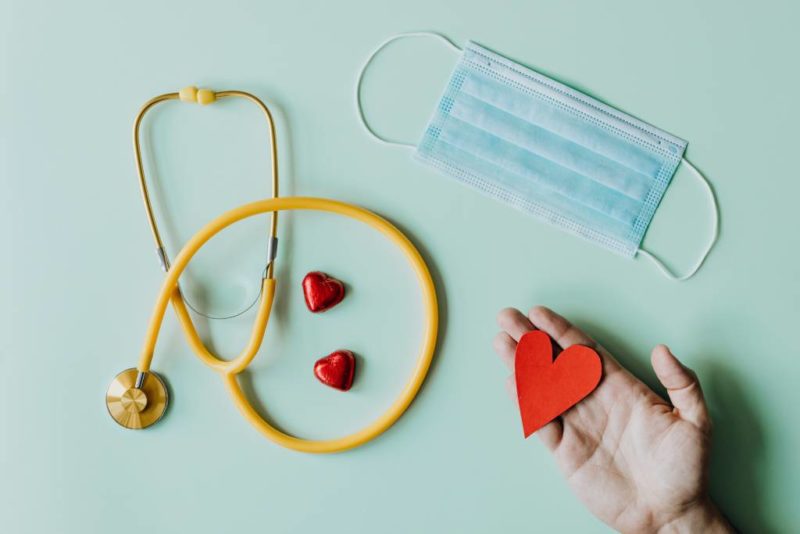A Radiology study showed that some COVID-19 patients who have blood clots in the legs have a higher rate of amputation and death compared to patients who have DVT alone without COVID-19. For this reason researchers are urging physicians to be on the lookout for DVT in their COVID patients. Signs of severe obstruction by clots, according to a letter published in JAMA Dermatology, are skin discoloration, rashes, and uneven lesions, which are dark red or dark purple. This is caused by red blood cells “leaking” into the skin.
As stated previously, DVT is also a risk factor for PE, a life threatening emergency condition. When the blood clot breaks free in the leg and travels to a lung, blocking the free flow of blood from the heart into the lungs where carbon dioxide is exchanged for oxygen. COVID-19 patients already are having a difficult time breathing and this only makes it worse. Remember the signs of PE include difficulty breathing, chest tightness or heaviness, and a feeling of impending doom. If you suspect a PE, call 911. Ask your doctor, “how do you know this is not a PE?”
Cardiovascular Disease and Heart Conditions
For patients with underlying cardiovascular conditions or high blood pressure, the rate of hospitalization with novel coronavirus is six times higher than someone without an underlying health condition. As doctors observe more cases, they have learned that severe coronavirus cases present with an immune response causing hyperinflammation and blood clots. These clots can lead to both heart attacks and strokes.
Why are Blood Clots Formed in Severe Coronavirus Cases?
Understanding that the information is still relatively new, with researchers learning more every day, we have begun to find answers to this question.
Due to the high rate of clots forming in COVID-19 patients when compared to patients with other viruses, researchers understood that there had to be a specific cause or set of contributing factors. What researchers in Munich, Germany, recently discovered is that blood clots found in the heart, lungs, and kidneys are likely caused by immunothrombosis, as the clots were primarily made up of platelets and activated immune cells. Essentially, clots are formed due to the body’s heightened immune response to the virus.
Activated immune cells are deployed by the immune system to trap and destroy bacterial and viral pathogens. While this is a good thing, it can also lead to the formation of blood clots.
What This Means for Patients Who Recover
Doctors are seeing recovered coronavirus patients who still present with symptoms related to blood clots formed during their illness. In fact, many physicians expect to see a surge in kidney disease for a generation. Some patients have difficulty resuming daily life and may not even be able to return home immediately after being discharged from the hospital. Many physicians treating severe coronavirus cases are calling for long-term care following recovery from the virus. Some patients require supplemental oxygen. Lack of activity also leads to other concerns, such as additional blood clots and loss of muscle mass.
What This Means for the Public
If you are high-risk, take precautions recommended by your doctor and health officials, including social distancing, masks, and hygiene. It’s also important to keep appointments with your doctors and take your medications as prescribed, unless otherwise instructed. It is equally important, however, to maintain a healthy lifestyle which includes exercise, fresh air, and sunshine. If you are exposed to high-risk people, it’s important to follow guidelines to protect those you love or who are in your care.
Most importantly, as we learn more about this virus, we are better able to treat the illness and prevent severe complications. So we will end on this note — there is reason to be hopeful. This information is already being used to help patients currently in the hospital. Remain cautious, but be hopeful.










